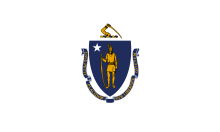
The 28th Massachusetts Infantry regiment was the second primarily Irish American volunteer infantry regiment recruited in Massachusetts for service in the American Civil War. The regiment's motto was Faugh a Ballagh
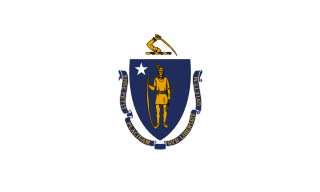
The 20th Massachusetts Volunteer Infantry, also known as the "Harvard Regiment", was a regiment of infantry in the American Civil War. The regiment was so nicknamed because the officers of the 20th were young Harvard graduates. In addition, some, but not all, of the private soldiers had attended Harvard. The 20th was organized at Camp Meigs in Readville, August 29 to September 4, 1861. After training they left Massachusetts for Washington, D. C., September 4. They would fight until the war's conclusion being mustered out on July 16 and discharged July 28, 1865. Fogel et al's Union Army Data urban sample suggests perhaps as many as two-thirds of the regiment's enlisted were immigrants with Irish immigrants making up half of the regiment's total.
The 53rd Massachusetts Volunteer Infantry was an infantry regiment recruited in Massachusetts for service in the American Civil War. The volunteers, mostly farmers, predominantly hailed from north-central Massachusetts.

The 9th Regiment Massachusetts Volunteer Infantry was a military unit from Boston, Massachusetts, USA, part of the Army of the Potomac during the American Civil War. It is also known as "The Fighting Ninth". It existed from 1861 to 1864 and participated in several key battles during the war. The unit is an Irish heritage unit, with many volunteers having been born in Ireland.
The 60th Regiment Massachusetts Volunteer Infantry was an infantry regiment that served in the Union Army during the American Civil War from 1864 to 1865.
The 62nd Massachusetts Volunteer Infantry Regiment was an infantry regiment being raised to serve in the Union Army during the American Civil War. The war ended before the unit was complete.
The 61st Regiment Massachusetts Volunteer Infantry was an infantry regiment raised for one year's service in the Union Army during the American Civil War from 1864 to 1865.
The 41st Regiment Massachusetts Volunteer Infantry was a three-year infantry regiment that served in the Union Army during the American Civil War. It was recruited as part of Governors Banks' and Andrew's recruitment drives to supply the union with a military force to hold and expand Union control of the lower Mississippi. In the late winter/early spring of 1863, it was converted to mounted infantry and later to cavalry. On its conversion in June 1863 at Port Hudson, it was disestablished and re-established as the 3rd Massachusetts Volunteer Cavalry.

The 51st Regiment Massachusetts Volunteer Infantry was a regiment of infantry that served in the Union Army during the American Civil War. The regiment was assigned to Major General John G. Foster's Department of North Carolina, later designated as the XVIII Corps. While based in New Bern, North Carolina, the 51st Massachusetts took part in several expeditions involving numerous units from Foster's command and were engaged in the Battle of Kinston, the Battle of White Hall and the Battle of Goldsborough Bridge, among other engagements.

The 7th Regiment Massachusetts Volunteer Infantry was an infantry regiment in the Union army during the American Civil War. It was formed on June 15, 1861, in Taunton. Its original commander was Colonel Darius N. Couch who would eventually be promoted to command the II Corps of the Army of the Potomac and, after that, the Department of the Susquehanna.
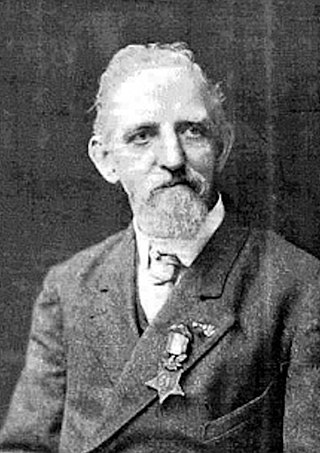
John H. Harbourne was an English born American soldier who fought in the American Civil War. Harbourne received his country's highest award for bravery during combat, the Medal of Honor. Harbourne's medal was won for his actions during the Second Battle of Petersburg on June 17, 1864. He was honored with the award on February 24, 1897.
Marcus M. Haskell was an American soldier who fought in the American Civil War. He received the Medal of Honor, the highest military award, for rescuing a wounded man while under fire at Antietam, on 17 September 1862, in spite of his own wound.

The 1st Company Massachusetts Sharpshooters was a sharpshooter unit in the Union Army during the American Civil War.
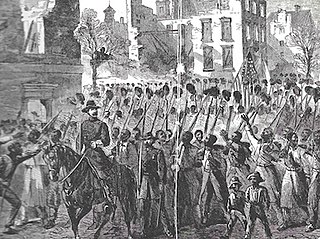
The 55th Massachusetts Infantry Regiment was the sister regiment of the renowned Massachusetts 54th Volunteers during the latter half of the American Civil War. The enactment of the Emancipation Proclamation by United States President Abraham Lincoln on January 1, 1863 opened the way for the enlistment of free men of color and newly liberated slaves to fight for their freedom within the Union Army. As the ranks of the 54th Massachusetts quickly reached its full complement of recruits, an overflow of colored volunteers continued to pour in from several other states outside Massachusetts — many of whom simply had not arrived in time — prompting Governor John Albion Andrew to authorize yet another regiment of colored soldiers sponsored by the Commonwealth. Lieutenant Colonel Norwood P. Hallowell of the 54th Massachusetts was promoted to colonel and appointed commander of the 55th Massachusetts on May 30, 1863. Five companies of the 55th Massachusetts were mustered into service on May 31; two more companies were mustered in on June 15; and the last three on June 22.
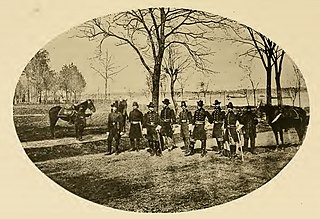
45th Regiment Massachusetts Volunteer Infantry was an infantry regiment in the Union army during the American Civil War. The regiment trained at Camp Meigs in Readville, Massachusetts before traveling to North Carolina, where they fought in the Battle of Kinston in December 1862, and in skirmishes in and around New Bern, North Carolina in the spring of 1863. They suffered heavy casualties in battle and due to fever. In June they returned to Boston, where they patrolled the streets to quell any draft riots, and were discharged on July 21. They were commanded by Colonel Charles R. Codman (1829-1918).
The 3rd Massachusetts Volunteer Cavalry Regiment was a cavalry regiment that served in the Union Army during the American Civil War. It was organized by consolidating the 41st Massachusetts Mounted Infantry and the 2nd Battalion Massachusetts Cavalry on June 17, 1863. The regiment served with the XIX Corps, Army of the Gulf during the Red River Campaign in 1864. Its heaviest combat during this campaign took place during the Battle of Sabine Crossroads.

The 43rd Regiment Massachusetts Volunteer Infantry was a regiment of infantry that served in the Union Army during the American Civil War. The unit was first formed in September 1862 in response to President Abraham Lincoln's call for 300,000 men to serve for nine months. The nucleus of the regiment was the Second Battalion Massachusetts Volunteer Militia, a unit dating to 1798 known as the Boston Light Infantry and nicknamed the "Tigers." The 43rd Massachusetts therefore became known as the "Tiger Regiment."

The 8th Regiment Massachusetts Volunteer Militia was a peacetime regiment of infantry that was activated for federal service in the Union Army for three separate tours during the American Civil War. The regiment consisted almost entirely of companies from Essex County, Massachusetts. The Cushing Guards, established 1775, were Company A based in Newburyport. The Lafayette Guards, created 1825, were Company B from Marblehead. Company C, the Sutton Light Infantry, organized in 1805 as the Marblehead Light Infantry, was also from Marblehead. The Lynn Light Infantry, chartered in 1852 was Company D. Company E was the Beverly Light Infantry, organized in 1814. The second Lynn company was Company F, the City Guards, organized in 1814. The Gloucester unit in the regiment was Company G, the American Guards, first organized in 1788. The third and last Marblehead company was H, the Glover Light Guards, created in 1852 and named in honor of John Glover of the Revolution. The Salem Light Infantry, Company J, had been created in 1805 and in 1859 had taken up Zouave drill and were thence known as the Salem Zouaves. The lone non-Essex company was Company K, the Allen Guards, created in 1806, that came to the regiment from Berkshire County's reorganized old Tenth Militia regiment, and based in Pittsfield.

The 59th Massachusetts Volunteer Infantry Regiment was a unit of the Union Army during the American Civil War. It was one of the four Massachusetts "Veteran Regiments" raised in the winter of 1863–64. Recruits joining these regiments were required to have served at least nine months in a prior unit. The regiment was attached to the IX Corps of the Army of the Potomac and took part in Lieutenant General Ulysses S. Grant's Overland Campaign in the spring of 1864. They participated in heavy combat during several battles including the Battles of the Wilderness, Spotsylvania Courthouse, and the Crater.

The 57th Regiment Massachusetts Volunteer Infantry was a regiment of infantry that served in the Union Army during the American Civil War. It was one of the four "Veteran Regiments" raised in Massachusetts during the winter of 1863–64. Recruits of these regiments were required to have served at least nine months in a prior unit. Colonel William F. Bartlett, at age 24 already a veteran of three regiments, organized the recruiting and formation of the 57th Massachusetts and served as its first commanding officer.
